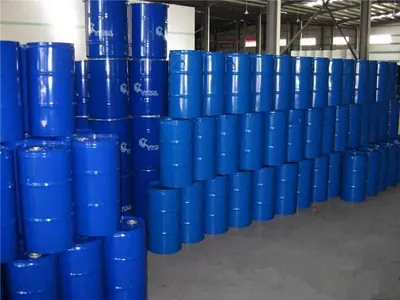Phenolwaa iskudhis kiimiko oo kala duwan oo leh codsiyo balaadhan oo dhanka warshadaha iyo cilmi baarista ah. Diyaarinteeda ganacsi waxay ku lug leedahay hannaan dhowr ah oo ka bilaabma oksaydhka cyclohexane. Geedi socodkan, cyclohexane waa oksaydhized galay taxane ah oo dhexdhexaad ah, oo ay ku jiraan cyclohexanol iyo cyclohexanone, kuwaas oo ka dibna loo beddelo phenol. Aan u dhaadhacno faahfaahinta habkan.
Diyaarinta ganacsiga ee phenol waxay ku bilaabataa oksaydhka cyclohexane. Dareen-celintan waxaa lagu fuliyaa joogitaanka wakiilka oksaydhiyaha, sida hawada ama ogsijiinta saafiga ah, iyo kicinta. Dareeraha loo isticmaalo falcelintan inta badan waa isku dhafka biraha kala-guurka, sida kobalt, manganese, iyo bromine. Dareen-celinta waxaa lagu sameeyaa heerkul sare iyo cadaadis, caadi ahaan u dhexeeya 600 ilaa 900°C iyo 10 ilaa 200 jawi, siday u kala horreeyaan.
Oksijiinta cyclohexane waxay keentaa samaynta taxane dhexdhexaad ah, oo ay ku jiraan cyclohexanol iyo cyclohexanone. Dhexdhexaadiyeyaashan ayaa markaa loo beddelaa phenol tallaabada falcelinta xigta. Dareen-celintan waxaa lagu fuliyaa joogitaanka aashitada, sida sulfuric acid ama hydrochloric acid. Dareeraha acid wuxuu kor u qaadaa fuuq-baxa cyclohexanol iyo cyclohexanone, taasoo keentay sameynta phenol iyo biyo.
phenol-ka soo baxa ayaa markaa lagu nadiifiyaa nadiifinta iyo farsamooyinka kale ee nadiifinta si looga saaro wasakhda iyo alaabta kale. Habka nadiifinta ayaa hubinaya in badeecada ugu dambeysa ay buuxiso shuruudaha nadiifinta ee codsiyada kala duwan.
Phenol waxaa loo isticmaalaa codsiyo kala duwan, oo ay ku jiraan soo saarista polycarbonates, Bisphenol A (BPA), resins phenolic, iyo xeryahooda kale duwan. Polycarbonates ayaa si weyn loogu isticmaalaa soo saarista weelasha caaga ah, muraayadaha, iyo qalabka kale ee indhaha sababtoo ah hufnaantooda sare iyo iska caabinta saameynta. BPA waxaa loo isticmaalaa soo saarista xabagta epoxy iyo xabagta kale, dahaarka, iyo isku-dhafka. Xabagta phenolic waxaa loo isticmaalaa soo saarista xabagta, dahaarka, iyo isku-dhafka sababtoo ah caabbinta sare ee kuleylka iyo kiimikooyinka.
Gebogebadii, diyaarinta ganacsiga ee phenol waxay ku lug leedahay oksaydhka cyclohexane, oo ay ku xigto beddelka dhexdhexaadiyeyaasha phenol iyo nadiifinta alaabta ugu dambeysa. phenol-ka ka soo baxa waxaa loo isticmaalaa codsiyo kala duwan oo kala duwan, oo ay ku jiraan soo saarista weel caag ah, dhejisyo, dahaarka, iyo isku-dhafka.
Waqtiga boostada: Dec-11-2023





